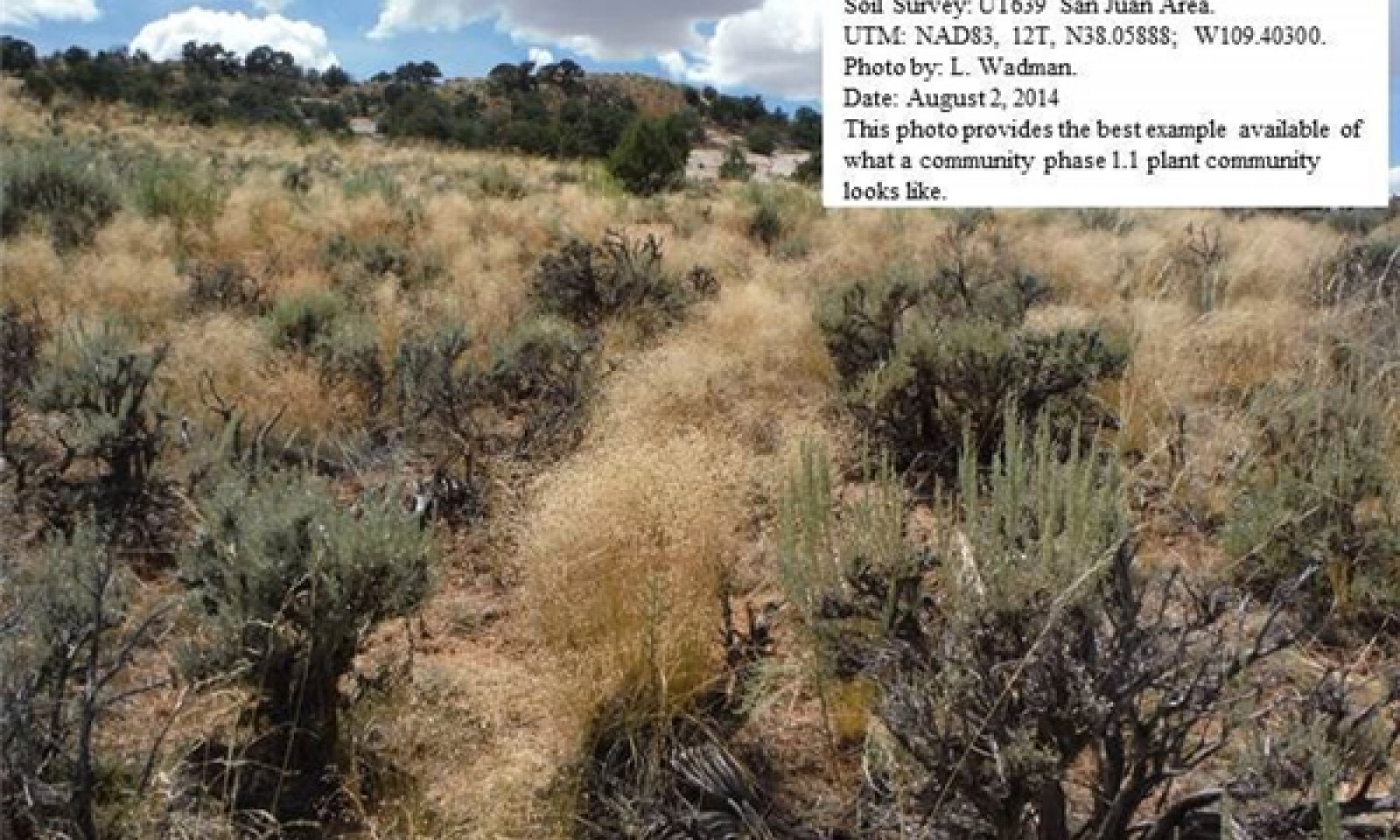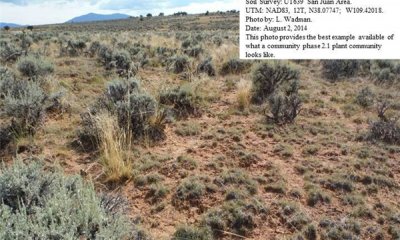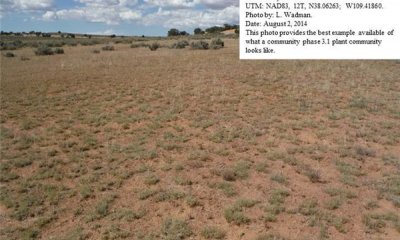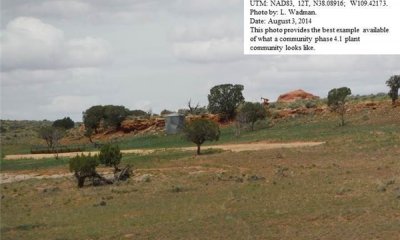
Upland Sand (Mormon Tea)
Scenario model
Current ecosystem state
Select a state
Management practices/drivers
Select a transition or restoration pathway
- Transition T1A More details
- Transition T2A More details
- Transition T3A More details
-
No transition or restoration pathway between the selected states has been described
Target ecosystem state
Select a state
Description
This Reference State describes the natural range of variability as influenced by the ecological dynamics of this site. This state includes those biotic communities that will become established when all successional sequences are completed under a natural disturbance regime. This state has a well developed shrub layer with Mormon tea and basin big sagebrush dominating. A mixture of other shrubs including fourwing saltbush, Torrey jointfir and green rabbitbrush are common. The herbaceous layer is composed of both warm and cool season grasses with Indian ricegrass, needle-and-thread and blue grama dominating. A wide range of forbs are commonly found. Two-needle pinyon has been known to invade this site when it is in close proximity to a seed source.
Primary disturbance mechanisms for this site include fire, grazing by native herbivores, prolonged rodent activity, insect herbivory, alluvial deposition and changes in the sites drainage patterns. These disturbances coupled with weather events dictate the dynamics that occur within the natural range of variability. The reference state is self sustaining and resistant to change due to high resistance to natural disturbances and high resilience after natural disturbances. When natural disturbances occur, the rate of recovery is relatively rapid due to niches being filled with highly adapted native vegetation.
Terminology:
Reference State: Community phases influenced by fire, native herbivore grazing, insect herbivory, alluvial deposits, time without disturbance, and climate.
Indicators: A well developed native perennial warm and cool season grass community with a diverse shrub overstory.
Feedbacks: Establishment of non-native invasive species in the understory. Regular fires that maintain the perennial grass understory and the establishment of shrubs.
At-risk Community Phase: All communities are at risk for invasion by non-native plants.
Trigger: Establishment of non-native plant species.
Submodel
Description
The Current Potential State is similar to the reference state except that non-native plant species are now present in all plant community phases. The primary disturbance mechanisms in this state can be natural or human induced. Events, such as improper livestock grazing, prolonged rodent activity, changes in historic fire regimes, improper OHV use, insect herbivory, or drought may influence this site. Any shift in species composition will affect nutrient cycling, soil-water relationships, hydrology, and soil stability.
Dominant grasses include both warm and cool season; however many times heavy spring grazing will remove the cool season grasses and heavy late summer and early fall grazing will remove the warm season grasses. This state is losing resistance to disturbances and resilience after disturbance. Invasive plants are beginning to fill the niches and establish on the site.
Terminology:
Current Potential State: Plant communities influenced by both natural and man influenced events, including rodent activity, improper OHV use, livestock grazing, insect herbivory, fire, time with out disturbances, and climatic fluctuations.
Indicators: A perennial cool and warm season grass understory with basin big sage or fourwing saltbush forming the dominant visual aspect. Non-native species are now present in all plant communities.
Feedbacks: Extended drought, improper livestock grazing, or other disturbance that changes the ecological dynamics of the site. Regular fires or properly managed domestic livestock grazing to maintain the understory and the establishment of shrubs.
At-risk Community Phase: All communities are at risk; however plant community 2.2 is most at risk due to its limited understory.
Trigger: Disturbance that facilitates the dominance of invasive forbs and/or grasses.
Submodel
Description
The Disturbed State of this ecological site has undergone major change. These changes have removed most of the sites original perennial vegetation. Part of this state may have served as bedding grounds for bands of sheep or as home range for wild horse herds. Fire may have removed shrub species including basin big sage and other native shrubs from the site.
Terminology:
Current Potential State: Plant communities influenced by events including overgrazing, disking, rodent activity and climatic fluctuations.
Indicators: Non-native species are now present in all plant communities.
Feedbacks: Extended drought and other disturbance that changes the ecological dynamics of the site.
At-risk Community Phase: All communities are at risk.
Trigger: Disturbance that facilitates the dominance of invasive forbs and/or grasses.
Submodel
Description
The Altered State of this ecological site has been mechanically disked to remove all perennial vegetation. The site was then typically converted to dry cropland. Where this cropland has been abandoned, invasive weeds may dominate the site. This state has lost significant resistance to natural disturbances.
Terminology:
Current Potential State: Plant communities influenced by man influenced events including disking, rodent activity and climatic fluctuations.
Indicators: Non-native species now dominate all plant communities.
Feedbacks: Extended drought and other disturbance that changes the ecological dynamics of the site.
At-risk Community Phase: All communities are at risk.
Trigger: Disturbance that facilitates the dominance of invasive forbs and/or grasses.
Submodel
Mechanism
This pathway describes the affects of long term drought that may not allow for sufficient precipitation to support herbaceous species and/or long periods without fire. Heavy wildlife browsing can allow for non-palatable shrubs to increase. Heavy livestock grazing will reduce palatable herbaceous species. Invasive species may invade the site.
Mechanism
This pathway describes the affects of long term drought that may not allow for sufficient precipitation to support herbaceous species and/or long periods without fire. Heavy wildlife browsing can allow for non-palatable shrubs to increase. Heavy livestock grazing will reduce palatable herbaceous species. Invasive species may increase on the site.
Model keys
Briefcase
Add ecological sites and Major Land Resource Areas to your briefcase by clicking on the briefcase (![]() ) icon wherever it occurs. Drag and drop items to reorder. Cookies are used to store briefcase items between browsing sessions. Because of this, the number of items that can be added to your briefcase is limited, and briefcase items added on one device and browser cannot be accessed from another device or browser. Users who do not wish to place cookies on their devices should not use the briefcase tool. Briefcase cookies serve no other purpose than described here and are deleted whenever browsing history is cleared.
) icon wherever it occurs. Drag and drop items to reorder. Cookies are used to store briefcase items between browsing sessions. Because of this, the number of items that can be added to your briefcase is limited, and briefcase items added on one device and browser cannot be accessed from another device or browser. Users who do not wish to place cookies on their devices should not use the briefcase tool. Briefcase cookies serve no other purpose than described here and are deleted whenever browsing history is cleared.
Ecological sites
Major Land Resource Areas
The Ecosystem Dynamics Interpretive Tool is an information system framework developed by the USDA-ARS Jornada Experimental Range, USDA Natural Resources Conservation Service, and New Mexico State University.












